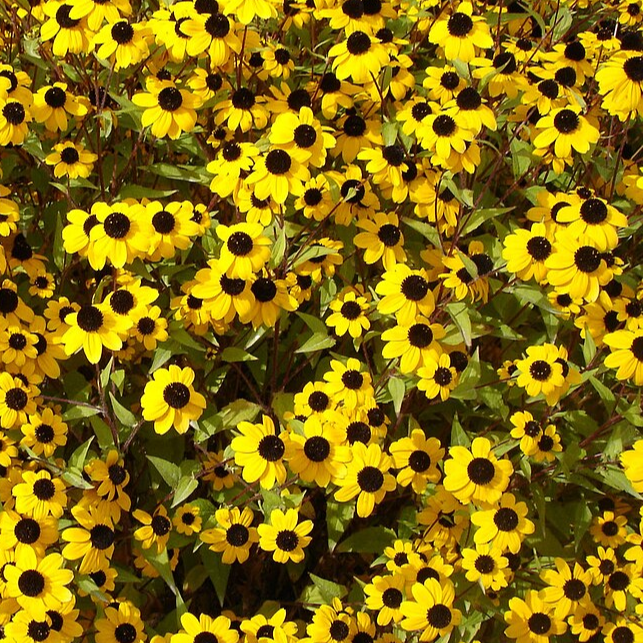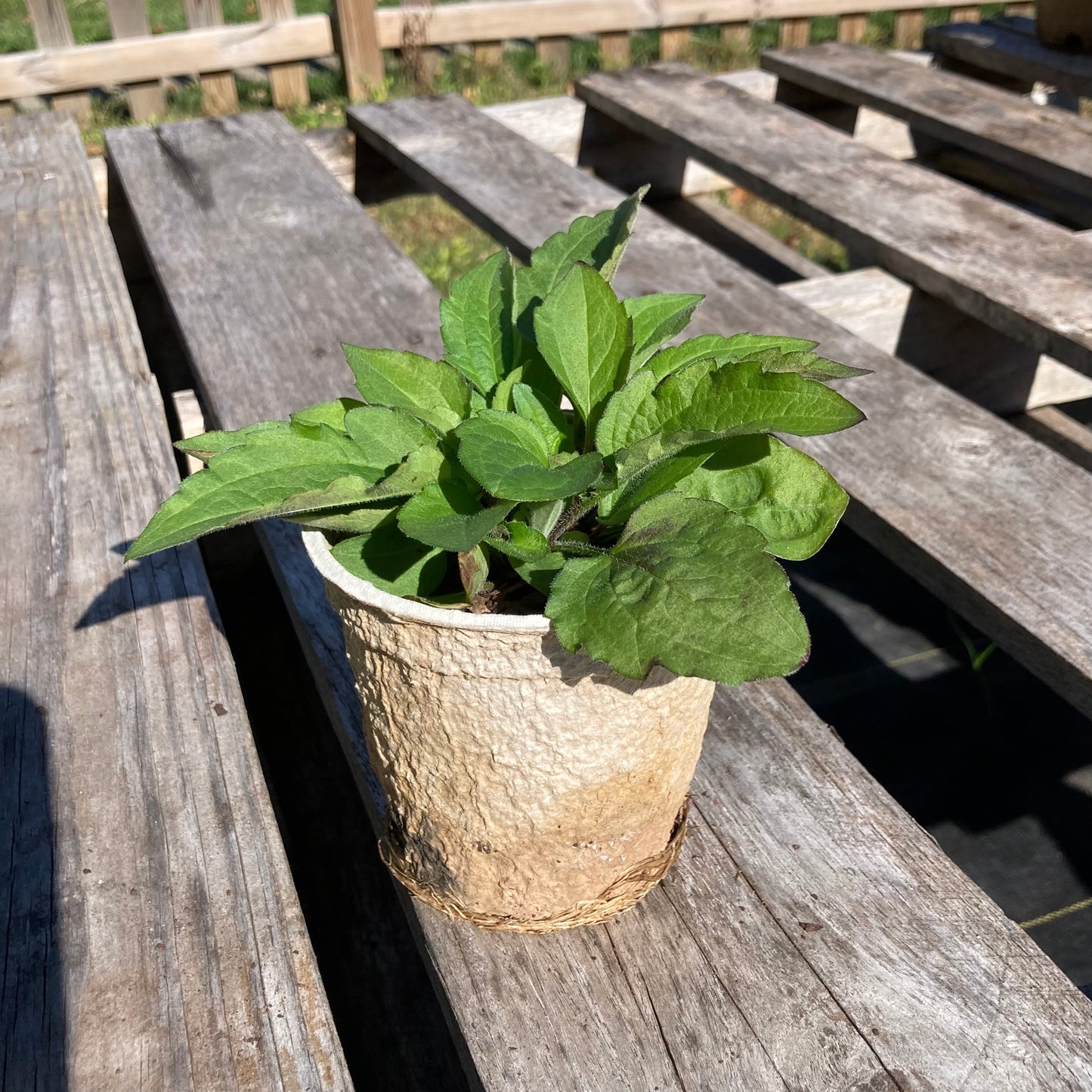Brown-eyed Susan
Rudbeckia triloba
Rudbeckia triloba
38 remaining
Couldn't load pickup availability
Sun/shade: Full sun to part shade
Soil moisture: Medium
Height: 3-5'
Flowering period: August to September
Deer resistance: Medium
As a light breeze passes through a patch of brown-eyed Susans, hundreds of dark-centered flowers swim before one’s eyes, conveying the plants’ motion as few other flowers can. Found in NE Ohio meadows, forest edges, and riparian areas, brown-eyed Susan lives for just a few years, relying on disturbance and re-seeding for its continuation. On streambanks, this takes the form of scouring floods, which remove competing plants and expose bare soil, where brown-eyed Susan then deposits its seeds. In keeping with this mode of existence, the plant is a prolific seed producer, and it germinates quite readily, generating hundreds of seedlings.
In the garden, brown-eyed Susan’s offspring will soon appear in any bare soil which is adjacent to the plant. This is a positive attribute when using the plant in naturalized spaces – it rapidly fills in the space, but will lose ground over time to rhizomatous and longer-lived perennials. In a formal garden bed, however, where one intends to maintain a bit of distance between plants, brown-eyed Susan is probably not a good choice.
Possessing a long bloom period that centers on the month of August, brown-eyed Susan is a nice complement to late summer bloomers such as common boneset, tall ironweed, and obedient plant. The plant does well in soils of moderate moisture, and it can tolerate some drought. Brown-eyed Susan prefers full sun, but it tolerates partial shade, growing to a shorter stature and producing fewer blooms. If growing in a sparsely vegetated area, or in nutrient-rich soil, brown-eyed Susan may lean or flop. This can be prevented by cutting the plant to half its height in June.
In terms of wildlife value, brown-eyed Susan attracts primarily short-tongued pollinators, such as sweat bees, wasps, hover flies, and tachinid flies. These visitors obtain pollen as well as nectar from the plant’s shallow flowers. Brown eyed Susan’s seed is a favorite of birds, especially sparrows, finches, and juncos, which can often be seen foraging for seed at the base of the plant.
Photo by saharadesertfox, CC BY-SA 3.0.



